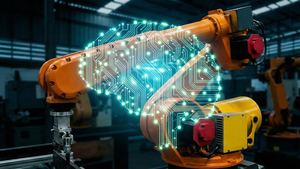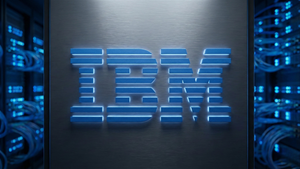
The global semiconductor sector is currently experiencing an unprecedented investment boom, a phenomenon largely driven by the insatiable demand for Artificial Intelligence (AI) and a strategic worldwide push for supply chain resilience. As of October 2025, the industry is witnessing a "Silicon Supercycle," characterized by surging capital expenditures, aggressive manufacturing capacity expansion, and a wave of strategic mergers and acquisitions. This intense activity is not merely a cyclical upturn; it represents a fundamental reorientation of the industry, positioning semiconductors as the foundational engine of modern economic expansion and technological advancement. With market projections nearing $700 billion in 2025 and an anticipated ascent to $1 trillion by 2030, these trends signify a pivotal moment for the tech landscape, laying the groundwork for the next era of AI and advanced computing.
Recent investment activities, from the strategic options trading in industry giants like Taiwan Semiconductor (NYSE: TSM) to targeted acquisitions aimed at bolstering critical technologies, underscore a profound confidence in the sector's future. Governments worldwide are actively incentivizing domestic production, while tech behemoths and innovative startups alike are pouring resources into developing the next generation of AI-optimized chips and advanced manufacturing processes. This collective effort is not only accelerating technological innovation but also reshaping geopolitical dynamics and setting the stage for an AI-powered future.
Unpacking the Investment Surge: Advanced Nodes, Strategic Acquisitions, and Market Dynamics
The current investment landscape in semiconductors is defined by a laser focus on AI and advanced manufacturing capabilities. Global capital expenditures are projected to be around $185 billion in 2025, leading to a 7% expansion in global manufacturing capacity. This substantial allocation of resources is primarily directed towards leading-edge process technologies, with companies like Taiwan Semiconductor Manufacturing Company (TSMC) planning significant CapEx, largely focused on advanced process technologies. The semiconductor manufacturing equipment market is also thriving, expected to hit a record $125.5 billion in sales in 2025, driven by the demand for advanced nodes such as 2nm Gate-All-Around (GAA) production and AI capacity expansions.
Specific investment activities highlight this trend. Options trading in Taiwan Semiconductor (NYSE: TSM) has shown remarkable activity, reflecting a mix of bullish and cautious sentiment. On October 29, 2025, TSM saw a total options trading volume of 132.16K contracts, with a slight lean towards call options. While some financial giants have made notable bullish moves, overall options flow sentiment on certain days has been bearish, suggesting a nuanced view despite the company's strong fundamentals and critical role in AI chip manufacturing. Projected price targets for TSM have ranged widely, indicating high investor interest and volatility.
Beyond trading, strategic acquisitions are a significant feature of this cycle. For instance, Onsemi (NASDAQ: ON) acquired United Silicon Carbide (a Qorvo subsidiary) in January 2025 for $115 million, a move aimed at boosting its silicon carbide power semiconductor portfolio for AI data centers and electric vehicles. NXP Semiconductors (NASDAQ: NXPI) also made strategic moves, acquiring Kinara.ai for $307 million in February 2025 to expand its deeptech AI processor capabilities and completing the acquisition of Aviva Links in October 2025 for automotive networking. Qualcomm (NASDAQ: QCOM) announced an agreement to acquire Alphawave for approximately $2.4 billion in June 2025, bolstering its expansion into the data center segment. These deals, alongside AMD's (NASDAQ: AMD) strategic acquisitions to challenge Nvidia (NASDAQ: NVDA) in the AI and data center ecosystem, underscore a shift towards specialized technology and enhanced supply chain control, particularly in the AI and high-performance computing (HPC) segments.
These current investment patterns differ significantly from previous cycles. The AI-centric nature of this boom is unprecedented, shifting focus from traditional segments like smartphones and PCs. Government incentives, such as the U.S. CHIPS Act and similar initiatives in Europe and Asia, are heavily bolstering investments, marking a global imperative to localize manufacturing and strengthen semiconductor supply chains, diverging from past priorities of pure cost-efficiency. Initial reactions from the financial community and industry experts are generally optimistic, with strong growth projections for 2025 and beyond, driven primarily by AI. However, concerns about geopolitical risks, talent shortages, and potential oversupply in non-AI segments persist.
Corporate Chessboard: Beneficiaries, Competition, and Strategic Maneuvers
The escalating global investment in semiconductors, particularly driven by AI and supply chain resilience, is dramatically reshaping the competitive landscape for AI companies, tech giants, and startups alike. At the forefront of benefiting are companies deeply entrenched in AI chip design and advanced manufacturing. NVIDIA (NASDAQ: NVDA) remains the undisputed leader in AI GPUs and accelerators, with unparalleled demand for its products and its CUDA platform serving as a de facto standard. AMD (NASDAQ: AMD) is rapidly expanding its MI series accelerators, positioning itself as a strong competitor in the high-growth AI server market.
As the leading foundry for advanced chips, TSMC (NYSE: TSM) is experiencing overwhelming demand for its cutting-edge process nodes and CoWoS packaging technology, crucial for enabling next-generation AI. Intel (NASDAQ: INTC) is aggressively pushing its foundry services and AI chip portfolio, including Gaudi accelerators, to regain market share and establish itself as a comprehensive provider in the AI era. Memory manufacturers like Micron Technology (NASDAQ: MU) and Samsung Electronics (KRX: 005930) are heavily investing in High-Bandwidth Memory (HBM) production, a critical component for memory-intensive AI workloads. Semiconductor equipment manufacturers such as ASML (AMS: ASML) and Tokyo Electron (TYO: 8035) are also indispensable beneficiaries, given their role in providing the advanced tools necessary for chip production.
The competitive implications for major AI labs and tech companies are profound. There's an intense race for advanced chips and manufacturing capacity, pushing a shift from traditional CPU-centric computing to heterogeneous architectures optimized for AI. Tech giants like Google (NASDAQ: GOOGL), Meta (NASDAQ: META), Microsoft (NASDAQ: MSFT), and Amazon (NASDAQ: AMZN) are increasingly investing in designing their own custom AI chips to optimize performance for specific workloads and reduce reliance on third-party solutions. This in-house chip development strategy provides a significant competitive edge.
This environment is also disrupting existing products and services. Traditional general-purpose hardware is proving inadequate for many AI workloads, necessitating a shift towards specialized AI-optimized silicon. This means products or services relying solely on older, less specialized hardware may become less competitive. Conversely, these advancements are enabling entirely new generations of AI models and applications, from advanced robotics to autonomous systems, redefining industries and human-computer interaction. The intense demand for AI chips could also lead to new "silicon squeezes," potentially disrupting manufacturing across various sectors.
Companies are pursuing several strategic advantages. Technological leadership, achieved through heavy R&D investment in next-generation process nodes and advanced packaging, is paramount. Supply chain resilience and localization, often supported by government incentives, are crucial for mitigating geopolitical risks. Strategic advantages are increasingly gained by companies that can optimize the entire technology stack, from chip design to software, leveraging AI not just as a consumer but also as a tool for chip design and manufacturing. Custom silicon development, strategic partnerships, and a focus on high-growth segments like AI accelerators and HBM are all key components of market positioning in this rapidly evolving landscape.
A New Era: Wider Significance and Geopolitical Fault Lines
The current investment trends in the semiconductor sector transcend mere economic activity; they represent a fundamental pivot in the broader AI landscape and global tech industry. This "AI Supercycle" signifies a deeper, more symbiotic relationship between AI and hardware, where AI is not just a software application but a co-architect of its own infrastructure. AI-powered Electronic Design Automation (EDA) tools are now accelerating chip design, creating a "virtuous self-improving loop" that pushes innovation beyond traditional Moore's Law scaling, emphasizing advanced packaging and heterogeneous integration for performance gains. This dynamic makes the current era distinct from previous tech booms driven by consumer electronics or mobile computing, as the current frontier of generative AI is critically bottlenecked by sophisticated, high-performance chips.
The broader societal impact is significant, with projections of creating and supporting hundreds of thousands of jobs globally. AI-driven semiconductor advancements are spurring transformations in healthcare, finance, manufacturing, and autonomous systems. Economically, the robust growth fuels aggressive R&D and drives increased industrial production, with companies exposed to AI seeing strong compound annual growth rates.
However, the most profound wider significance lies in the geopolitical arena. The current landscape is characterized by "techno-nationalism" and a "silicon schism," primarily between the United States and China, as nations strive for "tech sovereignty"—control over the design, manufacturing, and supply of advanced chips. The U.S. has implemented stringent export controls on advanced computing and AI chips and manufacturing equipment to China, reshaping supply chains and forcing AI chipmakers to create "China-compliant" products. This has led to a global scramble for enhanced manufacturing capacity and resilient supply chains, diverging from previous cycles that prioritized cost-efficiency over geographical diversification. Government initiatives like the U.S. CHIPS Act and the EU Chips Act aim to bolster domestic production capabilities and regional partnerships, exemplified by TSMC's (NYSE: TSM) global expansion into the U.S. and Japan to diversify its manufacturing footprint and mitigate risks. Taiwan's critical role in advanced chip manufacturing makes it a strategic focal point, acting as a "silicon shield" and deterring aggression due to the catastrophic global economic impact a disruption would cause.
Despite the optimistic outlook, significant concerns loom. Supply chain vulnerabilities persist, especially with geographic concentration in East Asia and reliance on critical raw materials from China. Economic risks include potential oversupply in traditional markets and concerns about "excess compute capacity" impacting AI-related returns. Technologically, the alarming energy consumption of AI data centers, projected to consume a substantial portion of global electricity by 2030-2035, raises significant environmental concerns. Geopolitical risks, including trade policies, export controls, and potential conflicts, continue to introduce complexities and fragmentation. The global talent shortage remains a critical challenge, potentially hindering technological advancement and capacity expansion.
The Horizon: Future Developments and Expert Predictions
Looking ahead, the semiconductor sector, fueled by current investment trends, is poised for continuous, transformative evolution. In the near term (2025-2030), the push for process node shrinkage will continue, with TSMC (NYSE: TSM) planning volume production of its 2nm process in late 2025, and innovations like Gate-All-Around (GAA) transistors extending miniaturization capabilities. Advanced packaging and integration, including 2.5D/3D integration and chiplets, will become more prevalent, boosting performance. Memory innovation will see High-Bandwidth Memory (HBM) revenue double in 2025, becoming a key growth engine for the memory sector. The wider adoption of Silicon Carbide (SiC) and Gallium Nitride (GaN) is expected across industries, especially for power conversion, and Extreme Ultraviolet (EUV) lithography will continue to see improvements. Crucially, AI and machine learning will be increasingly integrated into the manufacturing process for predictive maintenance and yield enhancement.
Beyond 2030, long-term developments include the progression of quantum computing, with semiconductors at its heart, and advancements in neuromorphic computing, mimicking the human brain for AI. Continued evolution of AI will lead to more sophisticated autonomous systems and potentially brain-computer interfaces. Exploration of Beyond EUV (BEUV) lithography and breakthroughs in novel materials will be critical for maintaining the pace of innovation.
These developments will unlock a vast array of applications. AI enablers like GPUs and advanced storage will drive growth in data centers and smartphones, with AI becoming ubiquitous in PCs and edge devices. The automotive sector, particularly electric vehicles (EVs) and autonomous driving (AD), will be a primary growth driver, relying on semiconductors for power management, ADAS, and in-vehicle computing. The Internet of Things (IoT) will continue its proliferation, demanding smart and secure connections. Healthcare will see advancements in high-reliability medical electronics, and renewable energy infrastructure will heavily depend on semiconductors for power management. The global rollout of 5G and nascent 6G research will require sophisticated components for ultra-fast communication.
However, significant challenges must be addressed. Geopolitical tensions, export controls, and supply chain vulnerabilities remain paramount, necessitating diversified sourcing and regional manufacturing efforts. The intensifying global talent shortage, projected to exceed 1 million workers by 2030, could hinder advancement. Technological barriers, including the rising cost of fabs and the physical limits of Moore's Law, require constant innovation. The immense power consumption of AI data centers and the environmental impact of manufacturing demand sustainable solutions. Balancing supply and demand to avoid oversupply in some segments will also be crucial.
Experts predict the total semiconductor market will surpass $1 trillion by 2030, primarily driven by AI, EVs, and consumer electronics. A continued "materials race" will be as critical as lithography advancements. AI will play a transformative role in enhancing R&D efficiency and optimizing production. Geopolitical factors will continue to reshape supply chains, making semiconductors a national priority and driving a more geographically balanced network of fabs. India is expected to approve new fabs, while China aims to innovate beyond EUV limitations.
The Dawn of a New Silicon Age: A Comprehensive Wrap-up
The global semiconductor sector, as of October 2025, stands at the precipice of a new era, fundamentally reshaped by the "AI Supercycle" and an urgent global mandate for supply chain resilience. The staggering investment, projected to push the market past $1 trillion by 2030, is a clear testament to its foundational role in all modern technological progress. Key takeaways include AI's dominant role as the primary catalyst, driving unprecedented capital expenditure into advanced nodes and packaging, and the powerful influence of geopolitical factors leading to significant regionalization of supply chains. The ongoing M&A activity underscores a strategic consolidation aimed at bolstering AI capabilities, while persistent challenges like talent shortages and environmental concerns demand innovative solutions.
The significance of these developments in the broader tech industry cannot be overstated. The massive capital injection directly underpins advancements across cloud computing, autonomous systems, IoT, and industrial electronics. The shift towards resilient, regionalized supply chains, though complex, promises a more diversified and stable global tech ecosystem, while intensified competition fuels innovation across the entire technology stack. This is not merely an incremental step but a transformative leap that will redefine how technology is developed, produced, and consumed.
The long-term impact on AI and technology will be profound. The focus on high-performance computing, advanced memory, and specialized AI accelerators will accelerate the development of more complex and powerful AI models, leading to ubiquitous AI integrated into virtually all applications and devices. Investments in cutting-edge process technologies and novel computing paradigms are paving the way for next-generation architectures specifically designed for AI, promising significant improvements in energy efficiency and performance. This will translate into smarter, faster, and more integrated technologies across every facet of human endeavor.
In the coming weeks and months, several critical areas warrant close attention. The implementation and potential revisions of geopolitical policies, such as the U.S. CHIPS Act, will continue to influence investment flows and manufacturing locations. Watch for progress in 2nm technology from TSMC (NYSE: TSM), Samsung (KRX: 005930), and Intel (NASDAQ: INTC), as 2025 is a pivotal year for this advancement. New AI chip launches and performance benchmarks from major players will indicate the pace of innovation, while ongoing M&A activity will signal further consolidation in the sector. Observing demand trends in non-AI segments will provide a holistic view of industry health, and any indications of a broader investment shift from AI hardware to software will be a crucial trend to monitor. Finally, how the industry addresses persistent supply chain complexities and the intensifying talent shortage will be key indicators of its resilience and future trajectory.
This content is intended for informational purposes only and represents analysis of current AI developments.
TokenRing AI delivers enterprise-grade solutions for multi-agent AI workflow orchestration, AI-powered development tools, and seamless remote collaboration platforms.
For more information, visit https://www.tokenring.ai/.








